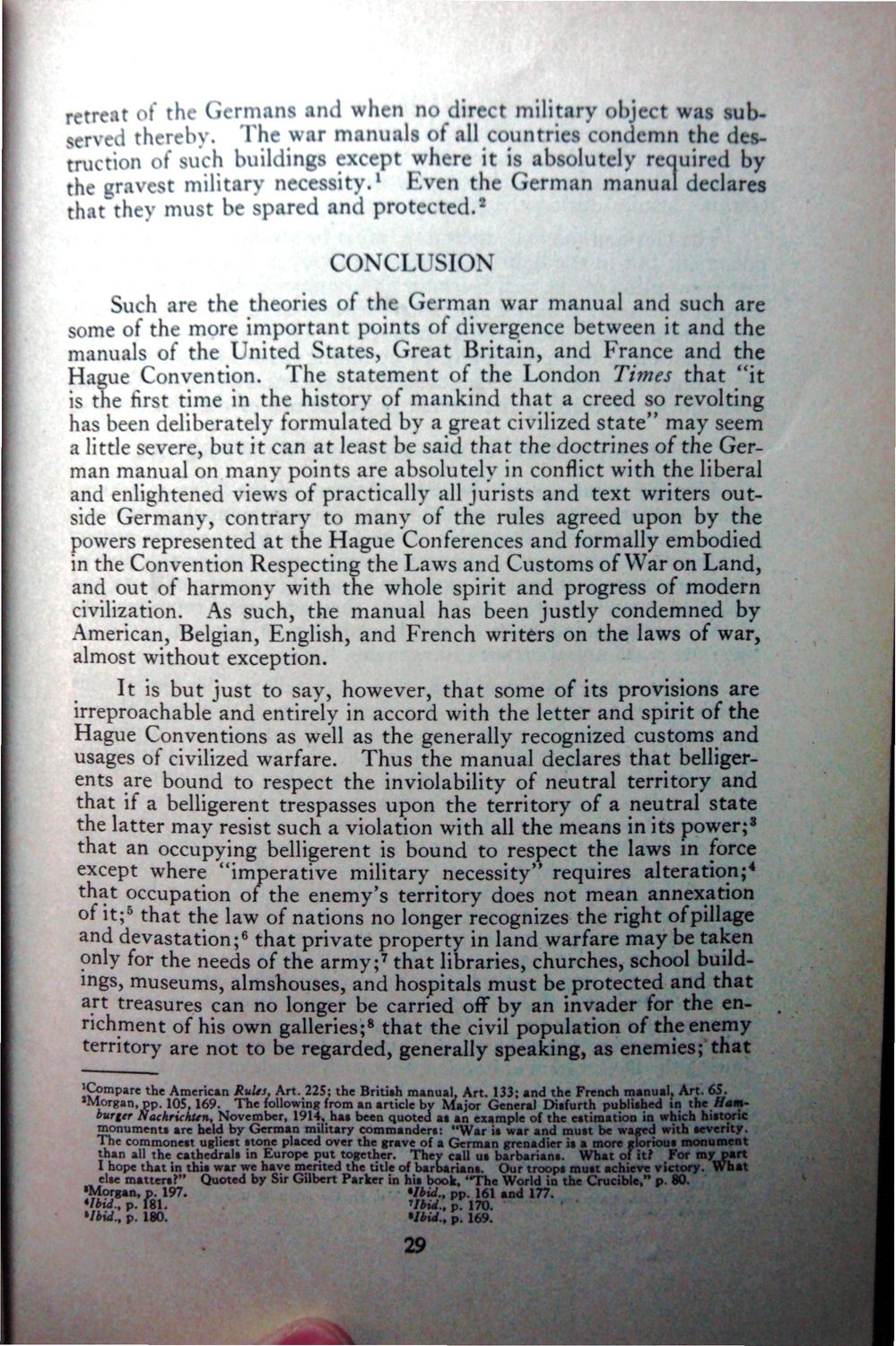| |
| |
Caption: War Publications - WWI Compilation 1923 - Article 14
This is a reduced-resolution page image for fast online browsing.

EXTRACTED TEXT FROM PAGE:
retreat of the Germans and when no direct military object was subserved thereby. The war manuals of all countries condemn the detthe gravest military necessity. Even th 2 that they must be spared and protected. CONCLUSION Such are the theories of the German war manual and such are some of the more important points of divergence between it and the manuals of the United States, Great Britain, and France and the Hague Convention. The statement of the London Times that "it is the first time in the history of mankind that a creed so revolting has been deliberately formulated by a great civilized state" may seem a little severe, but it can at least be said that the doctrines of the German manual on many points are absolutely in conflict with the liberal and enlightened views of practically all jurists and text writers outside Germany, contrary to many of the rules agreed upon by the powers represented at the Hague Conferences and formally embodied in the Convention Respecting the Laws and Customs of War on Land, and out of harmony with the whole spirit and progress of modern civilization. As such, the manual has been justly condemned by American, Belgian, English, and French writers on the laws of war, almost without exception. It is but just to say, however, that some of its provisions are irreproachable and entirely in accord with the letter and spirit of the H ague Conventions as well as the generally recognized customs and usages of civilized warfare. Thus the manual declares that belligerents are bound to respect the inviolability of neutral territory and that if a belligerent trespasses upon the territory of a neutral state the latter may resist such a violation with all the means in its power;' that an occupying belligerent is bound to respect the laws in force 4 except where "imperative military necessity" requires alteration; that occupation of the enemy's territory does not mean annexation 5 of it; that the law of nations no longer recognizes the right of pillage 6 and devastation; that private property in land warfare may be taken 7 only for the needs of the army; that libraries, churches, school buildings, museums, almshouses, and hospitals must be protected and that art treasures can no longer be carried off by an invader for the en8 richment of his own galleries; that the civil population of the enemy territory are not to be regarded, generally speaking, as enemies; that ^Compare the American Rults, Art. 225; the British manual, Art. 133; and the French manual. Art. 6S. 'Morgan, pp. 105,169. The following from an article by Major General Ditfurth published in the Hamburger Nachrichttn, November, 1914, has been quoted at an example of the estimation in which historic monuments are held by German military commanders: "War is war and must be waged with severity. The commonest ugliest stone placed over the grave of a German grenadier is a more glorious monument than all the cathedrals in Europe put together. They call us barbarians. What of it? For my part I hope that in this war we have merited the title of barbarians. Our troont must achieve victory. What the Crucible," p. 80. •Morgan, D. 197. •Ibid., pp. 161 and 177. *lbtd.% p. 181. 'Ibid., p. 170. »/W. f p. 180. • / « * , p. 169. 1 29 k,
| |